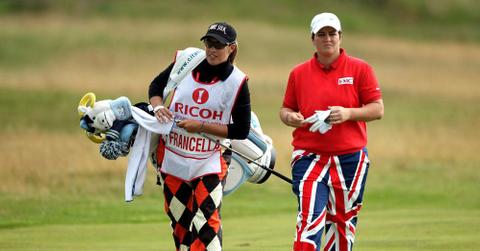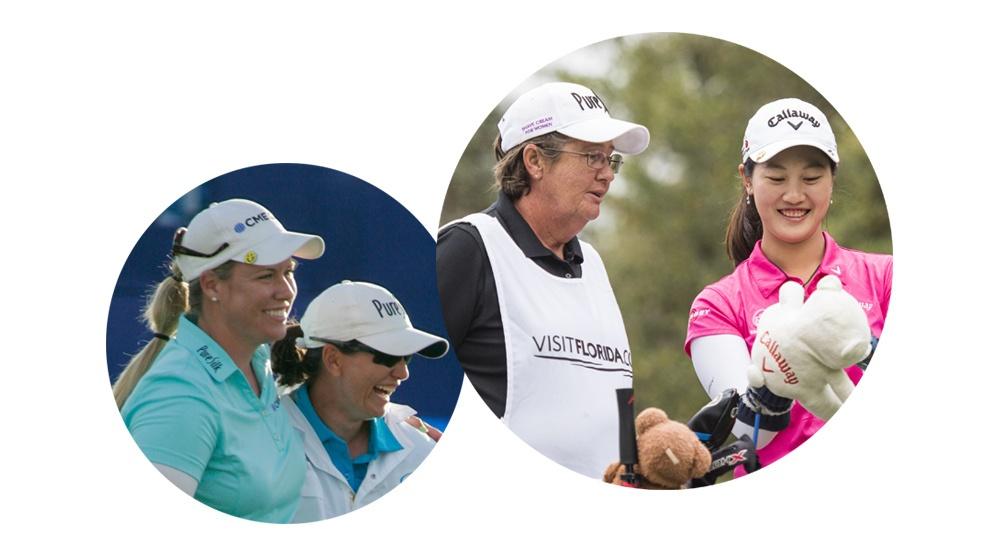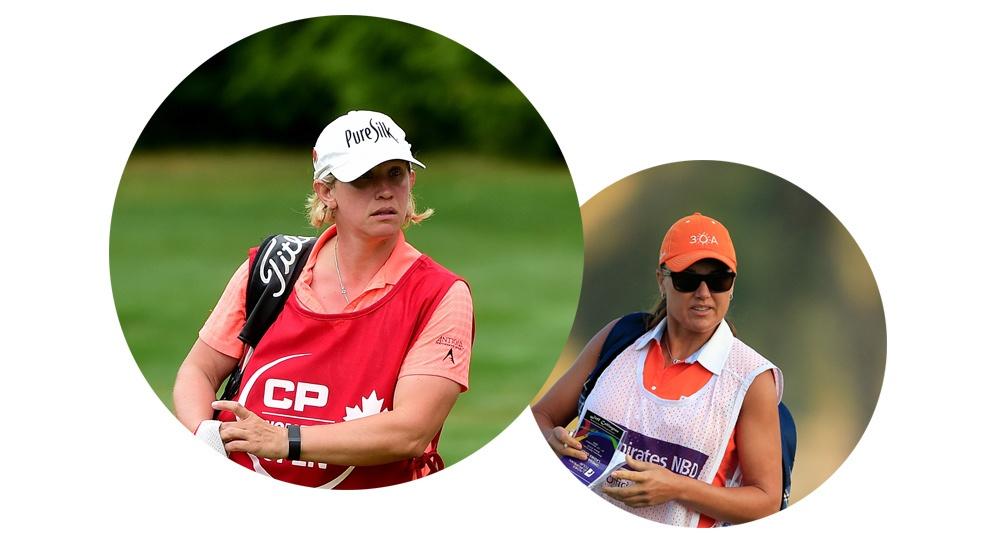
Carry On: The Rise Of Female Caddies
July 28 2017, Published 2:33 p.m. ET
The stereotype of the caddie as a wiry, wisecracking, cigarette-smoking sidekick disappeared ages ago, but it’s safe to say that whatever form the modern bag-handler takes in most people’s minds, it’s unlikely to be a woman. At least for now. Over the years the role of caddies has grown, particularly on pro tours. Caddies get yardages, know pin locations, help with club selection, remind a player to breathe when the nerves kick in, know when to chat and when to be quiet—and yes, they often do still have jokes readily at hand. As the job has evolved into a deeper more nuanced role, it has also grown to become a viable career option for women. Today, while it’s not exactly common to see a woman on the bag, neither should it be overly surprising.
-“The only female caddie to have won a PGA Tour major, she’s also the only woman in the Caddie Hall of Fame—but it’s unlikely that she’ll be the last, especially with the likes of Meaghan Francella and Michelle Simpson on course.”
Rickie Fowler, Sergio Garcia, Rory McIlroy, Dustin Johnson and numerous other pros have had their wife/girlfriend caddie for them at the Master’s Par-3 tournament, which is meant to be a fun family event, to be fair. But some tour players, such as Steve Stricker and Nick Watney, have had their wives (Nicki and Amber, respectively) substitute on occasion for their regular caddies. And in the case of PGA player Patrick Reed, his wife Justine was much more than a substitute, helping the pro to five wins before setting down the bag to begin a family. There’s family at work on the LPGA Tour, as well, most notably with Symetra Tour player Brittany Henderson, who’s been caddying for her sister Brooke since day one and who helped her then-17-year-old sibling to her first tour victory (in Portland in 2015, by eight shots).
But female caddies aren’t limited to special events or family. Fanny Sunesson spent two years on the European Tour before jumping to the PGA Tour and famously caddying for Nick Faldo between 1990 and 1999—a stretch during which he took four majors, including two Masters Green Jackets. The only female caddie to have won a PGA Tour major, she’s also the only woman in the Caddie Hall of Fame—but it’s unlikely that she’ll be the last, especially with the likes of Meaghan Francella and Michelle Simpson on course.

LPGA’s Brittany Lincicome with Missy Pederson; and right, LPGA’s Xi Yu Lin with Mardi Lunn
Both ladies are former professional players who chose to caddy after their playing days were over. Francella, who in 2007 won in a four-hole playoff against Annika Sorenstam at the MasterCard Classic and who netted over $1.1 million in career earnings, lost her tour card in 2013 but didn’t want to leave golf. “When I decided to stop playing, I really didn’t want to get out of the golf business quite yet,” she said. “All my friends were still out there and I didn’t mind the lifestyle of traveling, so I figured the next best thing would be caddying.”
For Simpson, her foray into caddying was more about fulfilling a request from a friend. Simpson hung up her spikes in 2006 after experiencing some medical issues, but LPGA player Meredith Duncan called her at the end of the year and asked if she’d be interested in caddying. Simpson took the job and spent two years with Duncan until the player lost her tour card, then she went on to caddy for top LPGA players like Brittany Lincicome and in coveted events like the Solheim Cup.
-“Caddies have lost their bags after a win when failing to make the cut the following week, leaving them to having to find a new player, and they’re completely tied to their player’s fortunes, be they good or bad.”
While Francella and Simpson have had their success with players, caddying is one of the most fickle jobs, providing little security—even less an playing. A player can fire a caddie whenever he or she pleases, even during the middle of a round—as Jessica Korda’s caddie found after nine holes in the third round of the 2013 U.S. Open. Caddies have lost their bags after a win when failing to make the cut the following week, leaving them to having to find a new player, and they’re completely tied to their player’s fortunes, be they good or bad.
While Simpson and Francella knew the intangibles, both said that the most difficult part of the job was simply not having the club in their hands when it mattered.“The hardest thing for me was having someone else in control of hitting the shot,” said Francella. “I love hitting tight bunker shots, and sometimes I’m thinking inside, ‘Give me the club and let me hit it!’ But I’m so comfortable on the side of the bag now that I’ve learned [to let go of control],” Francella said. Simpson shared the sentiment but noted that their experience as players helps in their role as a caddie.

Alena Sharp’s caddy Sarah Bowman; and right, Beth Allen’s caddy Sophie Gustafson
When caddying for Meredith Duncan at Qualifying School, on the final day they stumbled on 16 with a double, a short par-4 with water on the left, with a par-3 and a par-5 left to play. “Duncan was an emotional player, and I really didn’t want to lose her to her emotions, and I looked at her and said, ‘You know, we’re okay. Let’s finish this out the best we can and see where it puts us.’ I really had no idea where we stood, but I knew she could do something great. Plus, I’ve been to Q-school, and I know how much pressure rides on that tournament. It’s really the hardest tournament of the year.”On the next hole, Duncan made a monstrous putt for birdie from the front of the green to a pin tucked in the back.
On 18, they had 70 yards to the pin for their third shot. Simpson, in hopes of amping Duncan up, said, “Why don’t you just go ahead and knock it in?’”Amazingly, the player one-hopped it in to get full status on the LPGA tour. For Simpson and Francella their experiences on the course as caddies have given them perspective, and each believes if she were to play again, she would have more success as a player as a result. “To be honest, I think I would be a better player now after caddying,” said Francella. “You totally have to be unemotional out there, and during my time as a player I was pretty emotional and there were a lot of ups and downs.
As a caddie you can’t be like that and you can’t show your emotions.”With opportunities growing for women in golf, Simpson encourages women, especially former players, to make a go of caddying: “There is definitely room for female caddies out here. The ratio between male and female caddies is way off, but we are starting to get more, so it’s good for players to know, [those] who may decide to leave the game or [who] don’t make it in golf, that there’s an avenue to stay around the game.” Just one thing, Francella says: “The bag is heavy!”
